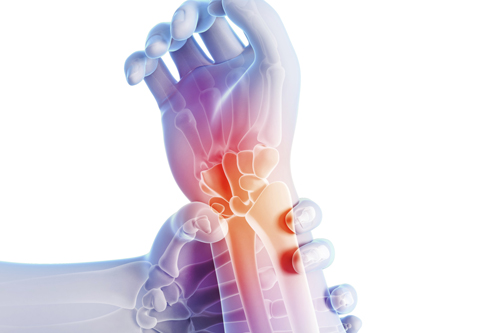
Most people are familiar with the concept of a wrist fracture, which refers to a break in one or more bones of the wrist. You may, however, have received a specifi c diagnosis of a Colles’ fracture, which occurs near the end of the radius—the arm bone that forms part of the wrist joint.
Colles’ fractures occur more often in older individuals and women, mostly due to their reduced muscular strength and greater susceptibility to bone changes leading to fractures. Winter seems to be the most common time of year for Colles’ fractures, the result o f an increased frequency of falls on out stretched arms.
Treatment can involve a nonsurgical or surgical approach. Often, the wrist is placed in a cast until the bone heals. If, however, the bone is not well positioned and future use of the wrist and arm could be compromised, a surgeon may perform a realignment through a skin incision to gain better access to the fracture, frequently including the use of metal implants to stabilize the fracture site.
After treatment, we will employ a multifaceted treatment plan with the goals of
- Improving function and range of motion;
- Increasing muscular strength;
- Reducing complications related to surgery;
- Encouraging better wound healing; and
- Facilitating patient independence and self-care.
Physical therapy following surgery or cast removal can include
- Strengthening exercises;
- Gentle exercises to improve range of motion;
- Massage and mobilization; and
- Training to help you maximize use of your hand and arm.
We will focus on getting your wrist and arm moving as soon as safely possible following your injury to have your wrist feeling and functioning to its best potential.


















